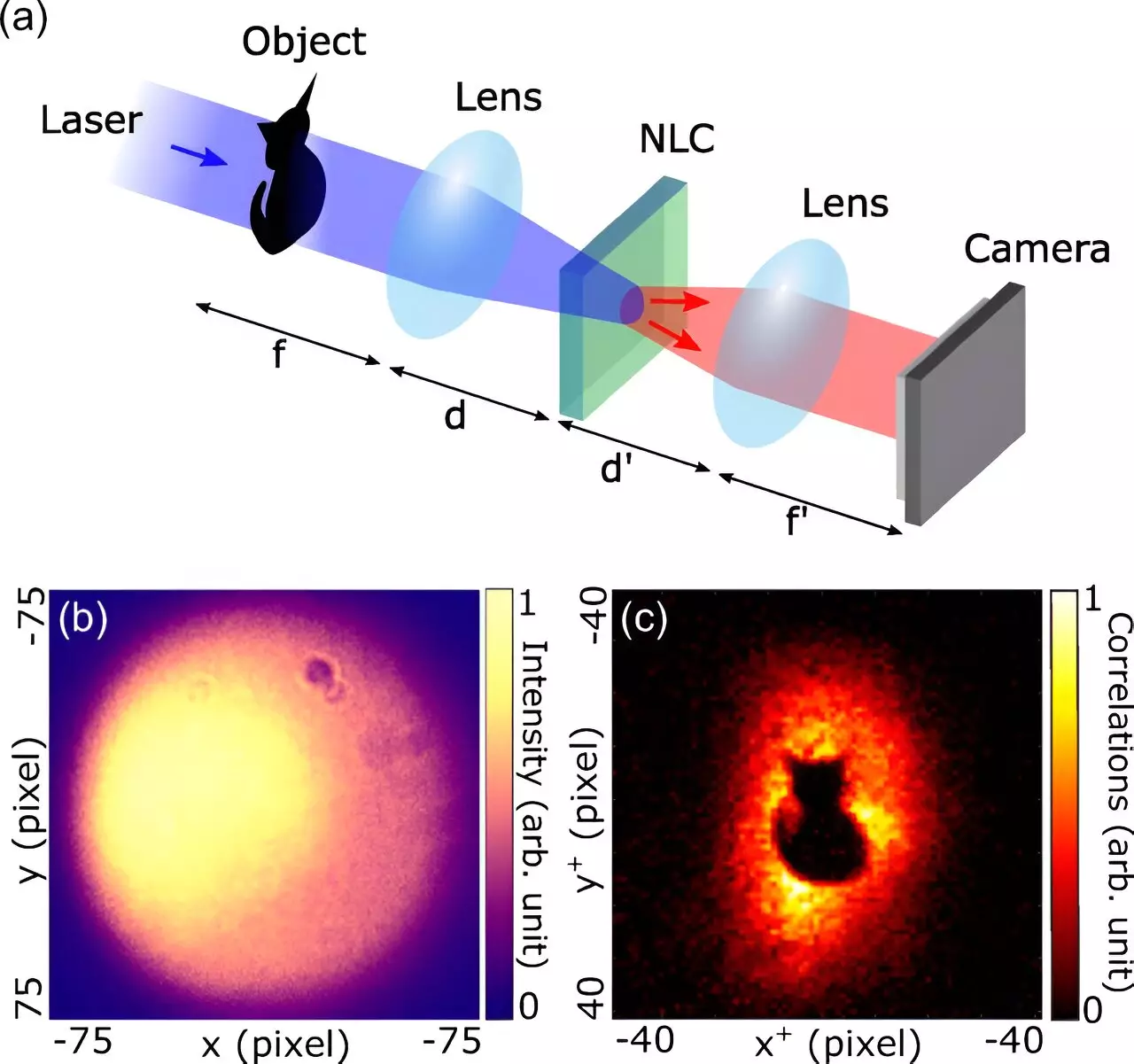Recent advancements in quantum imaging have shown the potential of utilizing photon entanglement to enhance security and clarity in visualizations. A groundbreaking study from the Paris Institute of Nanoscience at Sorbonne University has introduced an innovative technique for encoding images in the quantum correlations of photon pairs. Unlike traditional imaging methods that are easily detectable and can be fooled, this cutting-edge approach effectively obfuscates the image, making it invisible to standard imaging technologies while still enabling reconstruction through advanced quantum techniques.
At the heart of this development is a phenomenon known as spontaneous parametric down-conversion (SPDC), where a high-energy photon—typically emitted by a blue pump laser—splits into two lower-energy entangled photons. This intricate process occurs within a specially designed nonlinear crystal. A significant aspect of this study is the importance of the specific quantum correlations that can be established between the emitted photon pairs, which are foundational to achieving optimal performance in various applications of quantum technology, such as quantum cryptography and quantum computing.
The ability to engineer these correlations relies heavily on manipulating the spatial properties of the pump laser beam, allowing researchers to create entangled photons arranged in the form of targeted objects. Harnessing this potential allows for a comprehensive rethinking of imaging techniques in quantum contexts.
In their experiment, researchers systematically placed an object within the object plane of a lens positioned prior to the nonlinear crystal. This setup mirrors traditional two-lens imaging systems in the absence of the crystal, where one would expect to see an inverted image of the object on a camera sensor. However, the inclusion of the crystal introduces a complexity: the resultant pairs of entangled photons emerge in the infrared spectrum, where superficial observation yields no discernible information regarding the original object.
To retrieve the information encoded in the spatial correlations of these photon pairs, specialized methodologies must be employed. This data extraction process aligns with the principles of coincidence detection, requiring single-photon sensitive cameras and specific algorithms designed to decode these advanced relationships. Only through an analysis of simultaneous photon arrivals can one discern the underlying patterns corresponding to the original object.
The implications of this research extend far beyond simple imaging techniques. By enabling the encoding of images in photon pairs’ spatial correlations, the study opens doors to novel approaches in quantum cryptography and communication systems. As Hugo Defienne, a leading scholar in the research, articulated, this technique represents an underutilized capacity of light that can serve as a medium for conveying information invisibly and securely.
The inherent flexibility of this approach further suggests that distinct images could be potentially encoded within a single stream of photon pairs. This speaks to a profound advancement in information density and reinforces the necessity for rapid developments in camera technology that can facilitate such complex data extraction. Indeed, as the researchers explore applications in scattering media, this technique could significantly enhance current practices across various scientific and commercial fields.
The advancement demonstrated by the Paris Institute of Nanoscience researchers underscores a remarkable intersection of quantum physics and practical imaging applications. By transforming the physical attributes of light into dynamic carriers of information, the study marks a pivotal point towards the development of new imaging protocols that leverage the unique properties of entangled photons. As this research progresses, it has the potential not only to innovate imaging technology but also to pave the way for enhanced security protocols in quantum communication, thereby redefining our approach to both imaging and information security in an increasingly digital world.

